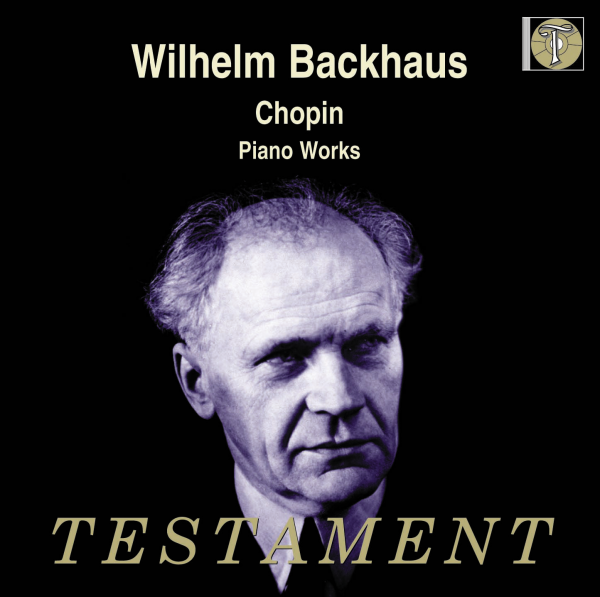Logowanie
Mikołaj - ten to ma gest!
Elton John, The Mamas & The Papas, Cat Stevens, Rod Stewart, Bobbie Gentry, Stevie Wonder, Engelbert Humperdinck
Memory Lane
Edycja Numerowana - 1000 egzemplarzy w skali światowej
RACHMANINOV, Eiji Oue, Minnesota Orchestra
Symphonic Dances / Vocalise
Best Recordings of 2001!!! NAJCZĘŚCIEJ KUPOWANA PŁYTA Z RR!
Karnawał czas zacząć!
Music of Love - Hi-Fi Latin Rhythms
Samba : Music of Celebration
AUDIOPHILE 24BIT RECORDING AND MASTERING
CHOPIN, LISZT, DEBUSSY, DVORAK, Gerhard Oppitz
Dances romantiques - A fantastic Notturno
Wzorcowa jakość audiofilska z Clearaudio
Winylowy niezbędnik
ClearAudio
Double Matrix Professional - Sonic
najbardziej inteligentna i skuteczna pralka do płyt winylowych wszelkiego typu - całkowicie automatyczna
CHOPIN, Wilhelm Backhaus
Piano Works
- 1. Piano Sonata No. 2 in B flat minor, Op. 35, CT. 202: I. Grave - Doppio movimento 19:25
- 2. Piano Sonata No. 2 in B flat minor, Op. 35, CT. 202: II. Scherzo 1:29
- 3. Piano Sonata No. 2 in B flat minor, Op. 35, CT. 202: III. Marche fun?bre (lento)
- 4. Piano Sonata No. 2 in B flat minor, Op. 35, CT. 202: IV. Finale (presto)
- 5. Etude for piano No. 2 in A minor, Op. 10/2, CT. 15
- 6. Etude for piano No. 5 in G flat major, Op. 10/5, CT. 18
- 7. Etude for piano No. 8 in F major, Op. 10/8, CT. 21
- 8. Etude for piano No. 10 in A flat major, Op. 10/10, CT. 23
- 9. Etude for piano No. 13 in A flat major, Op. 25/1, CT. 26
- 10. Etude for piano No. 14 in F minor, Op. 25/2, CT. 27
- 11. Etude for piano No. 15 in F major, Op. 25/3, CT 28.
- 12. Etude for piano No. 18 in G sharp minor, Op. 25/6, CT. 31
- 13. Etude for piano No. 19 in C sharp minor, Op. 25/7, CT. 32
- 14. Etude for piano No. 20 in D flat major, Op. 25/8, CT. 33
- 15. Etude for piano No. 21 in G flat major, Op. 25/9, C. 34
- 16. Etude for piano No. 23 in A minor, Op. 25/11, CT. 36
- 17. Ballade for piano No. 1 in G minor, Op. 23, CT. 2
- 18. Etude for piano No. 3 in E major, Op. 10/3, CT. 16
- 19. Mazurka for piano No. 17 in B flat minor, Op. 24/4, CT. 67
- 20. Mazurka for piano No. 20 in D flat major, Op. 30/3, CT. 70
- 21. Mazurka for piano No. 24 in C major, Op. 33/3, CT. 74
- 22. Waltz for piano No. 2 in A flat major, Op. 34/1, CT. 208
- Wilhelm Backhaus - piano
- CHOPIN
The stylistic sympathy and technical élan Wilhelm Backhaus brought to his pioneering 1928 HMV set of Chopin's Etudes had largely eroded when he came to make his early 1950s Chopin recordings for Decca. In the B-flat minor sonata's opening movement Backhaus' heavy touch and squarish phrasing are compounded by blurred notes and overpedaled passages. He starts the Scherzo at one tempo, only to speed up to another after several bars (one of Backhaus' most irritating habits), although his rock-steady control in the Finale impresses. Some of the Etudes, such as the F major (Op. 10 No. 8), "Butterfly" (Op. 25 No. 9), and "Winter Wind" (Op. 25 No. 11), are quite virile and solidly projected; not so the stodgy, Teutonic (or rather "Two-ton-ic") A-flat major (Op. 10 No. 10), C-sharp minor (Op. 25 No. 7), and F major (Op. 25 No. 3). The G minor Ballade contains marvelously fleet passagework (the coda's right-hand runs, for instance) alongside the heavy-handed, overpedaled qualities cited in the Sonata. On the other hand, Backhaus reveals an unsuspected affinity for the three Mazurkas and the A-flat Waltz, all crisply dispatched with lilt, rhythmic point, and character. As you've gathered by now, this is an uneven collection, but specialist collectors will appreciate Testament's superb transfers. (Jed Distler, ClassicsToday.com)





























